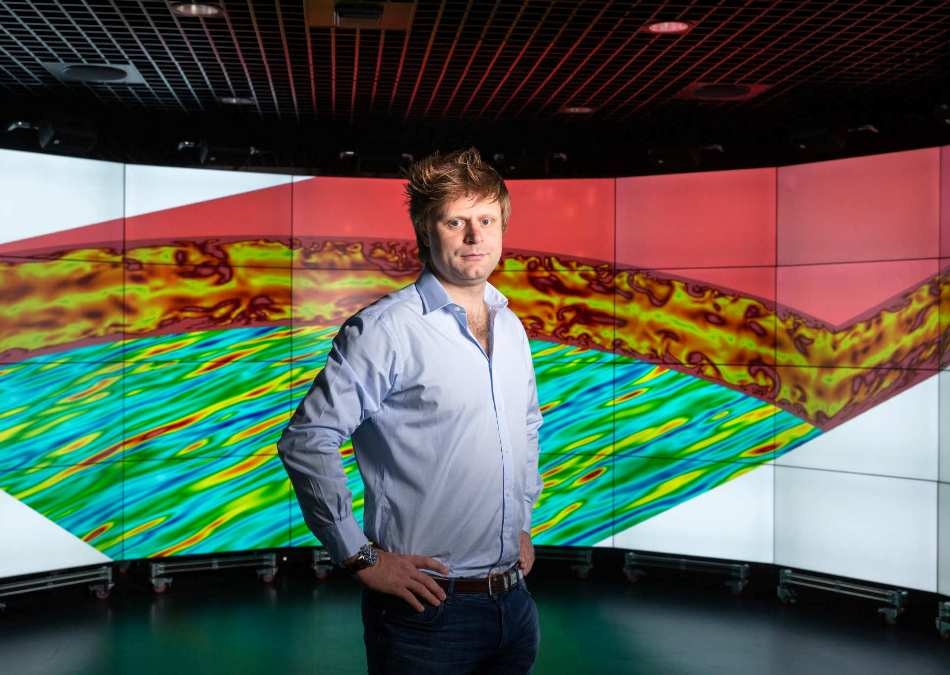Jul 29 2019
Advanced simulations have found a solution to an issue in turbulent fluid flow that could result in more efficient engines and turbines.
 Dr Peter Vincent with one of the flow simulations. (Image credit: Imperial College London)
Dr Peter Vincent with one of the flow simulations. (Image credit: Imperial College London)
When a fluid like air or water flows rapid enough, it will suffer turbulence—apparently random variations in pressure and velocity within the fluid.
It is very difficult to explore turbulence but it is vital for several fields of engineering, such as jet engines or airflow past wind turbines. Gaining better insight into turbulence would enable engineers to develop more efficient turbine blades, for example, or create more aerodynamic shapes for Formula 1 cars.
However, existing engineering models of turbulence usually depend upon “empirical” relationships based on earlier observations of turbulence to estimate what will happen, instead of completely understanding the underlying physics.
This is due to the fact that the underlying physics is highly complex, leaving several questions that appear to be unsolved.
Scientists at Imperial College London have currently employed supercomputers, running simulations on graphics processors originally created for gaming, to crack a longstanding question in turbulence.
Finding the Solution
The study outcome, reported today in the Journal of Fluid Mechanics, implies that empirical models can be tested and new models can be developed, resulting in more optimal designs in engineering.
We now have a solution for an important fundamental flow problem. This means we can check empirical models of turbulence against the ‘correct’ answer, to see how well they are describing what actually happens, or if they need adjusting.
Dr Peter Vincent, Study Co-Author, Department of Aeronautics, Imperial College London
The question is rather straightforward: when a turbulent fluid that flows in a channel is interrupted, how does that interruption disperse in the fluid? For instance, if water was abruptly discharged from a dam into a river and then closed, what effect that pulse of dam water would have on the flow of the river?
In order to find out the overall “average” behavior of the fluid response, the group had to replicate the numerous smaller responses within the fluid. Using supercomputers, they ran thousands of turbulent flow simulations, each necessitating billions of calculations to be done.
These simulations enabled the researchers to determine the accurate parameters that illustrate how the disturbance disperses in the flow and established a variety of conditions that should be met by empirical turbulence models.
From my first days studying fluid mechanics, I had some fundamental questions that I wanted to know the answers to. This was one of them, and now after 40 years I have the answer.
Professor Sergei Chernyshenko, Study Co-Author, Department of Aeronautics, Imperial College London